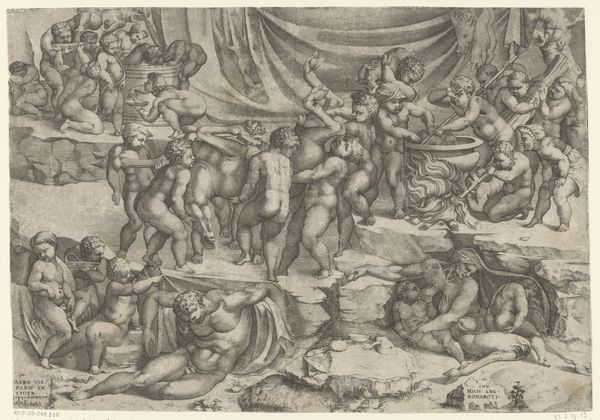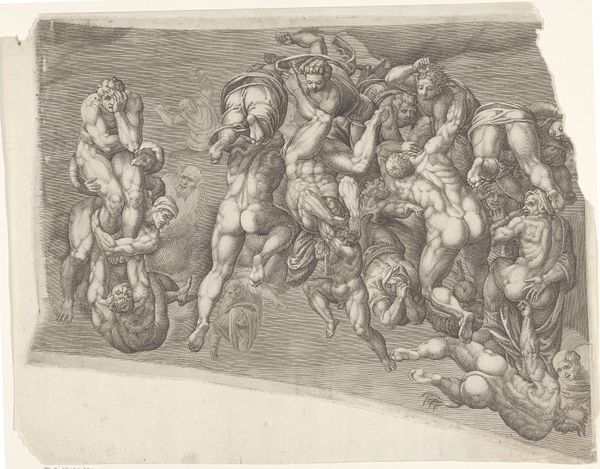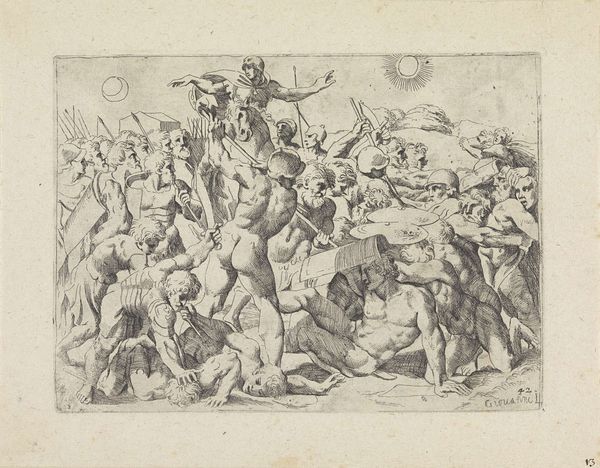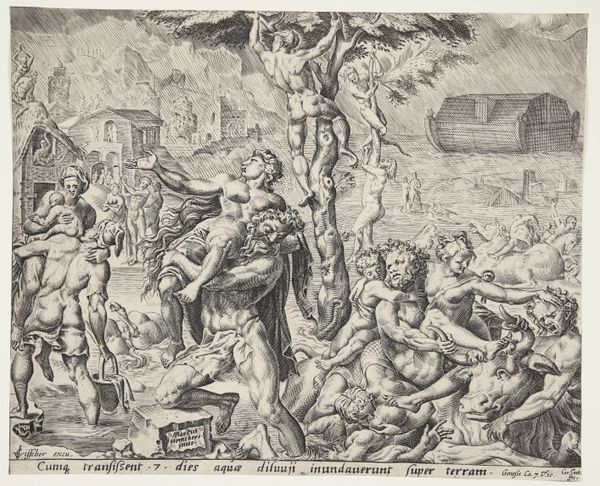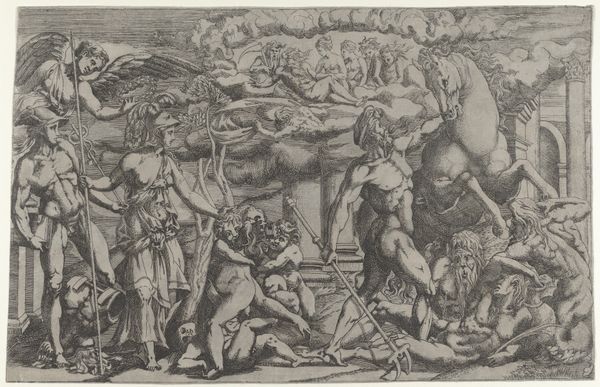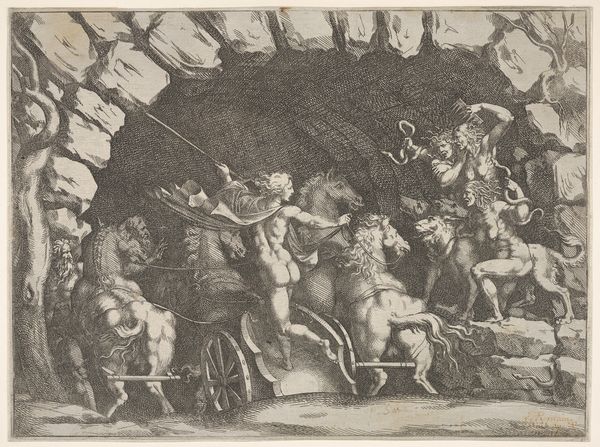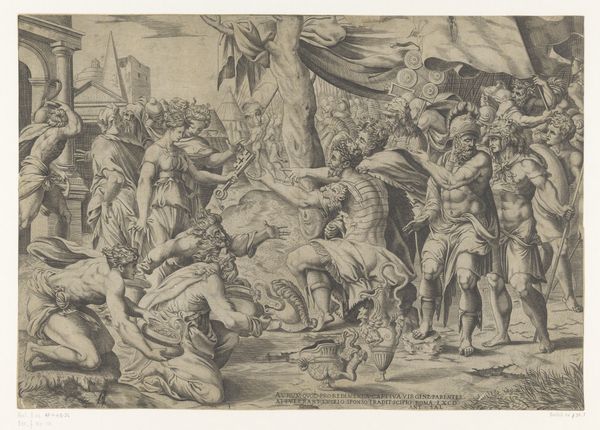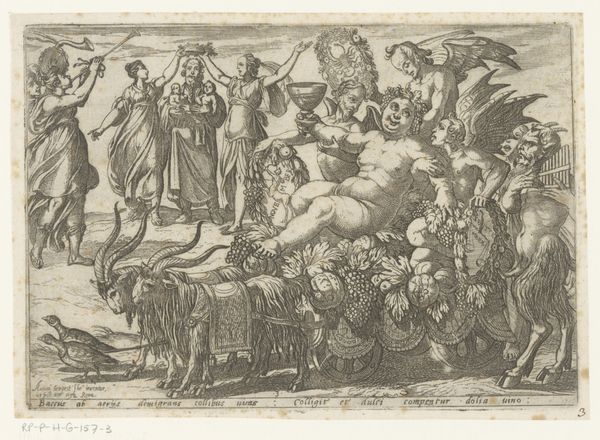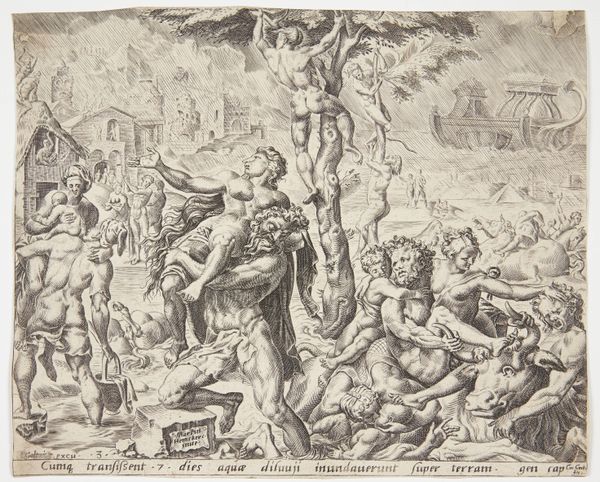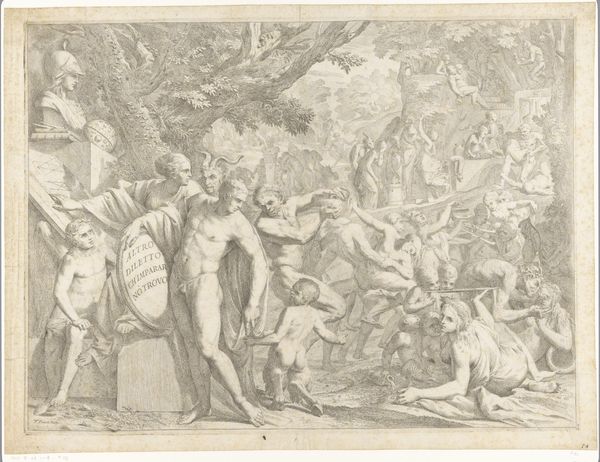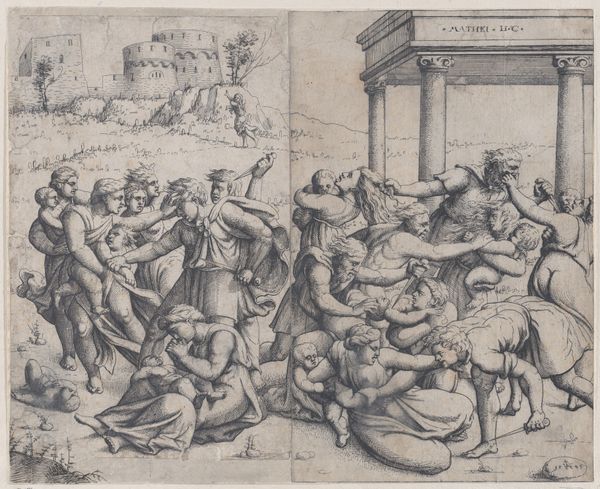
print, etching, engraving
#
allegory
# print
#
etching
#
mannerism
#
figuration
#
pencil drawing
#
group-portraits
#
history-painting
#
italian-renaissance
#
engraving
Dimensions: height 350 mm, width 442 mm
Copyright: Rijks Museum: Open Domain
Antonio Salamanca created this engraving, "Feast of the Gods," in the 16th century. Here, the gods are depicted in a classical banquet, a scene filled with symbols of power, pleasure, and abundance. Note the winged figures above, adorning the gods with wreaths. This motif of crowning with wreaths is ancient, symbolizing victory and honor, seen in Roman triumphs and Greek ceremonies. Now, consider how this gesture appears elsewhere. In Botticelli's "Primavera," Flora scatters flowers, a parallel act of bestowing fertility and grace. Yet, while Botticelli evokes a sense of ethereal beauty, Salamanca's engraving carries a weightier, more overtly celebratory tone. This act of crowning is not merely decorative but deeply psychological, tapping into our collective memory of reverence and aspiration. The feasting scene engages our subconscious desires for plenty and security, echoing through centuries of art, a testament to the enduring human quest for meaning.
Comments
No comments
Be the first to comment and join the conversation on the ultimate creative platform.
